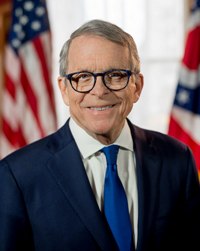Returning Home: How Often Do US Senators Become Governor?
Since the turn of the 20th Century, governors-turned-U.S. Senators outnumber U.S. Senators-turned-governors by more than 7:1

Those senators are not expected to run for other offices, but there is some talk that a few ex- or sitting U.S. Senators may run for governor next November.
For example, there is speculation that former GOP New Hampshire U.S. Senator Kelly Ayotte will run to succeed Governor Chris Sununu if he chooses not to seek a fourth term.
In Nebraska, Governor Pete Ricketts is term-limited and Republican Senator Deb Fischer is reported to be currently weighing a run for his open seat.
Over the last two decades, however, only a few sitting U.S. Senators have won gubernatorial elections – Alaska Republican Frank Murkowski in 2002, New Jersey Democrat Jon Corzine in 2005, and Kansas Republican Sam Brownback in 2010.
Just one sitting senator lost a general election for the office during this span: Louisiana Republican David Vitter in 2015.
A few other ex-senators have had success in winning gubernatorial elections during the 21st Century including Republican-turned-independent Lincoln Chafee of Rhode Island in 2010, DFLer Mark Dayton of Minnesota in 2010, and Ohio Republican Mike DeWine (pictured at top) in 2018.
Former senators Gordon Humphrey of New Hampshire (2000, 2002) and Mark Begich of Alaska (2018) were not so fortunate in their gubernatorial bids.
Over the decades, however, it has been much more common for sitting and former governors to later serve in the U.S. Senate than the reverse.
This may not be surprising at first blush because there are, of course, twice as many seats in the nation’s upper legislative chamber than gubernatorial seats – as well as no term limits for the former.
The numbers are quite striking.
Since 1900, just 21 sitting or former U.S. Senators have been elected governor while 153 sitting or former governors were elected or appointed to the U.S. Senate.
[An additional six officeholders served as governor, then U.S. Senator, and then as governor again for a subsequent stint].
In addition to the recent examples listed above, other notable U.S. Senators to win gubernatorial elections include one from a third party (Minnesota Farmer-Laborite Elmer Benson), a Republican senator turned independent governor (Connecticut’s Lowell Weicker), and a former U.S. Senate Majority Leader (Arizona Democrat Ernest McFarland).
By contrast, in just the first two decades of the 21st Century alone, there have already been 19 sitting or former governors who were sworn into the U.S. Senate.
Thirteen of these are currently in office: Delaware Democrat Tom Carper, North Dakota Republican John Hoeven, Virginia Democrats Mark Warner and Tim Kaine, Idaho Republican Jim Risch, West Virginia Democrat Joe Manchin, Maine independent Angus King, South Dakota Republican Mike Rounds, New Hampshire Democrats Jeanne Shaheen and Maggie Hassan, Florida Republican Rick Scott, Utah Republican Mitt Romney (a former Massachusetts governor), and Colorado Democrat John Hickenlooper.
Other sitting and former senators subsequently elected governor since the turn of the 20th Century include Louisiana Democrat Newton Blanchard (in 1904), Wyoming Democrat Joseph Carey (1910), Georgia Democrat Thomas Hardwick (1920), Montana Republican Joseph Dixon (1920), West Virginia Democrat Matthew Neely (1940), Washington Democrat Monrad Wallgren (1944), Vermont Republican Ernest Gibson (1946), South Carolina Democrat James Byrnes (1950), Texas Democrat Price Daniel (1956), Florida Democrat Lawton Chiles (1990), California Republican Pete Wilson (1990), and Idaho Republican Dirk Kempthorne (1998).
Follow Smart Politics on Twitter.

Corzine was actually sworn in as state governor in 2006. It also has the longest current ‘naysayer’ streak in gubernatorial voting (since 1989) though there seems to be a decent chance that it will finally come to an end this year.
Good catch, elected in ’05 and took his seat in ’06. Updated above.
“…Joseph Dixon (1920)…” He WAS elected to the us senate, but not in 1920 (covered in a report from 10 of 03 2020).
Of the “19” governors-turned-senators since 2001 NONE reached the chamber by arranging for his own appointment, something that had been somewhat commonplace in the previous century (if I am not mistaken, “Wendie” Anderson of the MN DFL was the most recent to have done so, in late 1976; only KY D “Happy” Chandler in 1940 managed to win at the ballot box after such “self-appointment”).
DeWine is one of the very few senators who later was elected state Attorney General, and even then not directly from his seat.
[…] years ago, Smart Politics documented the very limited number of cases of sitting or former U.S. Senators who have gone on to win […]
[…] Smart Politics has previously documented how it has been exceedingly rare for U.S. Senators – former or sitting – to go home and win gubernatorial elections. […]
[…] is a precedent for governors to transition into the Senate. Between 1900 and 2020, 153 governors have been elected or appointed into the Senate. Most recently, from 2000 to 2020, 19 governors eventually served in the Senate. This means that […]
[…] according to a 2021 report from the University of Minnesota, would be the first sitting senator to be elected governor of any […]
[…] Republican U.S. Senator Mike Braun moved one step closer to becoming one of the fewer than two-dozen sitting or ex-U.S. Senators elected governor since 1900, after winning his party’s nomination on […]
Ayotte has waited two extra years to try her hand at the top executive post. She will join fellow US Senator Mike Braun (IN-R) as party nominees on the ‘road less trodden’ for 2024, not only writ large but also in contrast with the current US senators of her home state (Shaheen and Hassan), both of whom had gone the more common State Capital-to-DC pathway.
[…] is looking to become just the 22nd sitting or former U.S. Senator to subsequently win a gubernatorial election and the first in New Hampshire. [Ayotte is also only the second to make such an attempt in the […]